After being wowed by the lesser-known North Dakota Badlands, we began our southward trek and spent two weeks in the Black Hills of South Dakota. Steve’s parents were from South Dakota, and growing up he heard a lot about the Black Hills area and the many exciting things to do here. So he was fired up that we were finally going to experience them, and I was about to unknowingly fall in love with the area myself!
There was so much to do here that I’m getting seriously behind in my posts, and we barely had enough time to see everything on out list. But I’m trying to keep my priorities straight – fun and fitness first, then blogging as time permits!
We began with one of Steve’s bucket list items, the popular and rugged Badlands National Park. I decided to post this one immediately following the one about the North Dakotas Badlands, for a better appreciation of the erosive forces of nature and the sculpted land it leaves behind in both areas. They were created about the same time, 65 million years ago, but we saw more spires and pinnacles on this stop. The rock layers contained hues of green, gold, buff and pink, which made them very colorful.
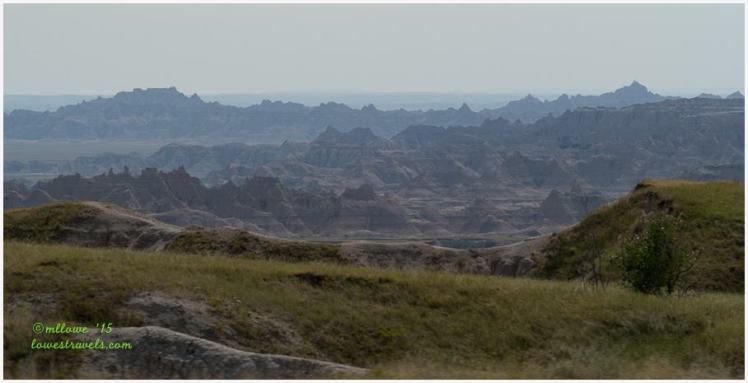
The park protects 242,756 acres of badlands, blended with the largest undisturbed mixed grass prairie in the United States. We entered from the west on highway 44 past the town of Scenic through the Buffalo Gap National Grassland. Our first stop was at the Ben Reifel Visitor Center near the town of Interior.
At the Visitor’s Center we were advised that driving the Badlands Scenic Loop Byway was the best way to learn the science behind its barren landscape, and at the same time enjoy the breathtaking vistas and quiet atmosphere it provides.
From the signs and plaques at several overlooks we learned that the badlands were formed by the geologic processes of deposition and erosion. The land was forced up, and the sea slowly drained away. A jungle developed on the exposed seabed, transforming the mud and shale into a bright yellow soil.
During the Oligocene period, the warm and humid climate slowly became cool and dry. As the lands to the west rose even higher, sediment-loaded floods washed over this level region, depositing layer after layer of mud, volcanic ash and sand. Under pressure of successive layers, these sediments became soft rock.
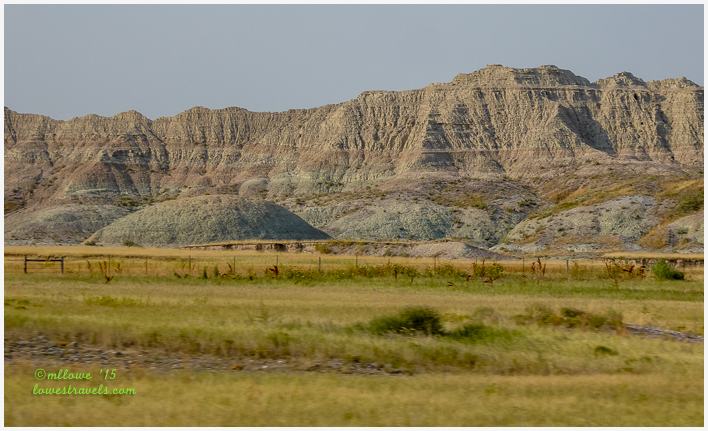
Continuous water and wind erosion have sculpted soft sedimentary rock into intricate mazes of narrow ravines, V-shaped gullies, ridges, buttes, and colorful pinnacles. The result is rock layers that reveal subtle hues of sand, rose, gold and green. Erosion continues to carve the badlands buttes today, and scientists speculate that in 500,000 years it will be flat again.
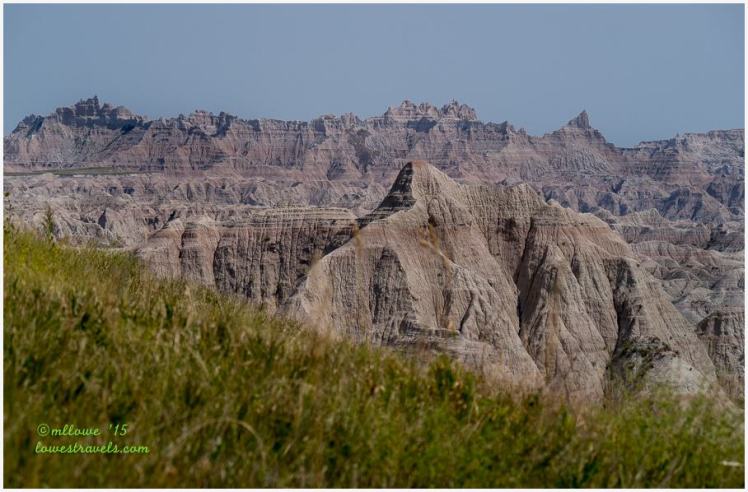
The main geological feature of the Badlands National Park is best described as a long ridge, or “wall” that extends nearly 100 miles south into the panhandle of the State of Nebraska. This wall divides the park into the upper and lower prairie.
The Scenic Loop Byway followed the wall, snaking through passes and sometimes dipping to the lower prairie. We enjoyed looking up at the spires and multi-layered ridges with a beautiful blue sky above to provide stark relief.
We climbed to the rim at one of the overlooks to view the cliffs and canyons below:
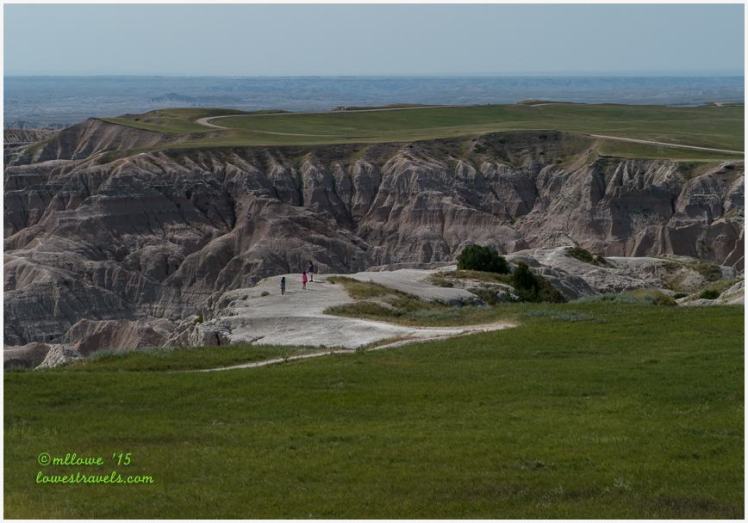
Hiking the Notch Trail, we had a good view of the badlands dropping down to the lower prairie, with the White River Valley below:
Then we followed the Door Trail to a landscape that made me feel like I was on another planet:
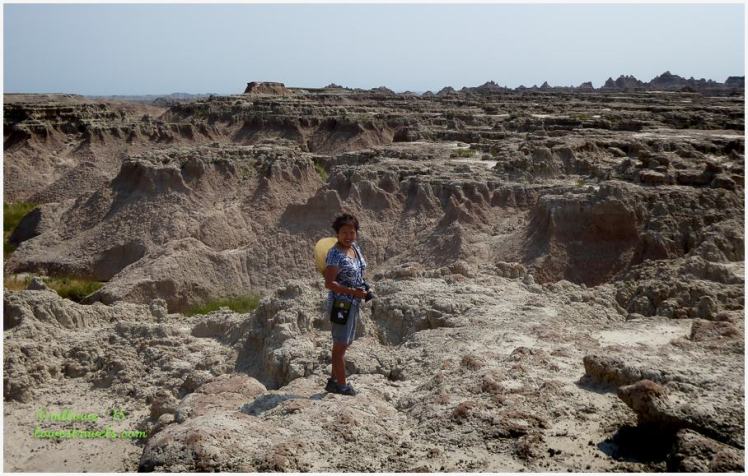
We did not see big wildlife, but I captured these little amphibians along the trail:
At the end of our badlands visit we saw an area where yellow and red were the colors on the hills. They were called Yellow Mound Paleosols, and they are evidence that a jungle resided here covered by a shallow sea which left behind its shale-exposed signatures.
The yellow soil is a result of tree roots that broke up the shale and chemicals from decaying plants. Then 37 millions years later sediments from the west washed over the jungle. The jungle rebounded, converting the new sediment into red soil. Buried once again by later sediment, both yellow and red soils were fossilized – and that’s what we’re seeing today. Amazing!
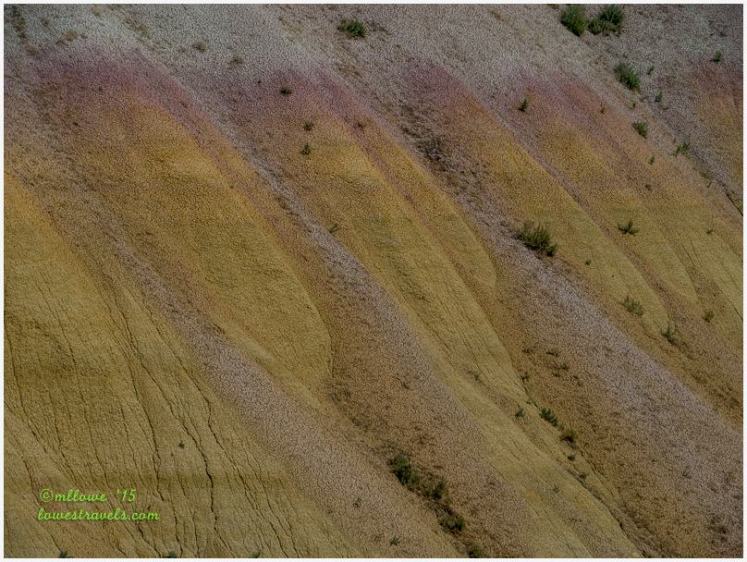
I could go on and on (as you probably suspected), but being in the badlands, also known as the White River Badlands, is a study in fascination. Nature continues to amaze us, and we’re very thankful that these areas are being protected for future generations.
On our way out of the park I caught a glimpse of this house sitting on top of the layered badlands, painted in a color that blended well with the colored rock layers. Pretty cool, but would you build your house on top of an eroding badlands?
Steve was happy to check this one off his bucket list, and I have to admit I did the same!
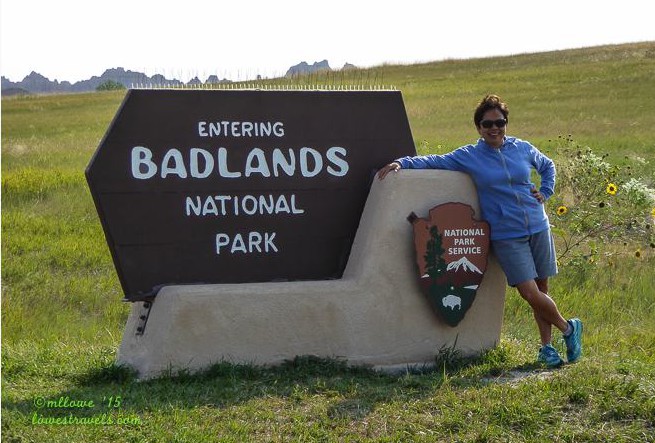
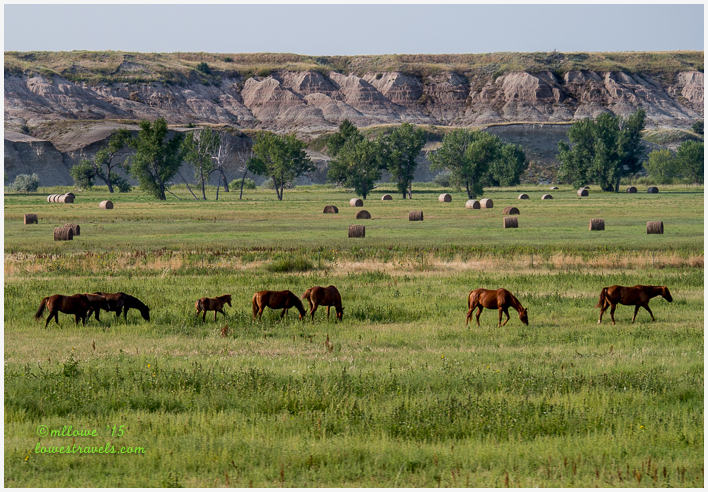
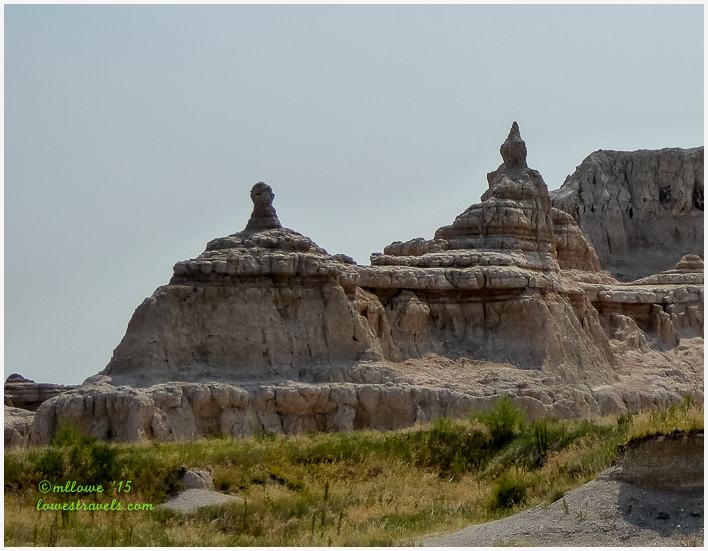

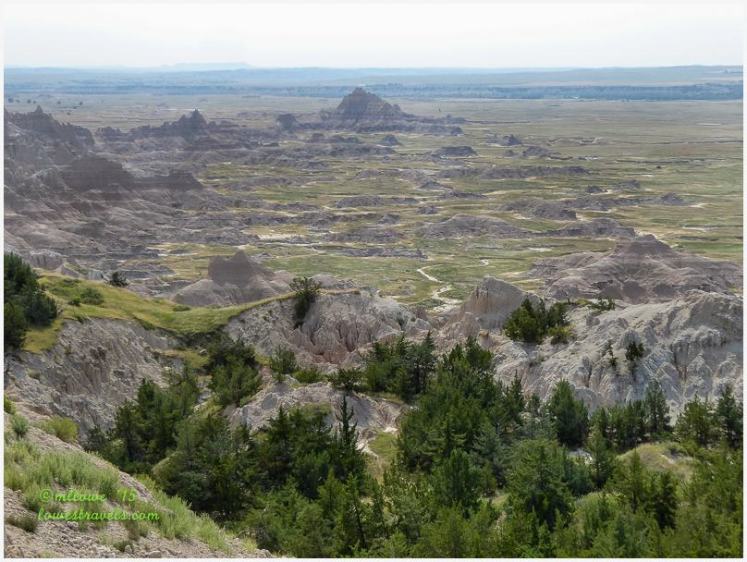



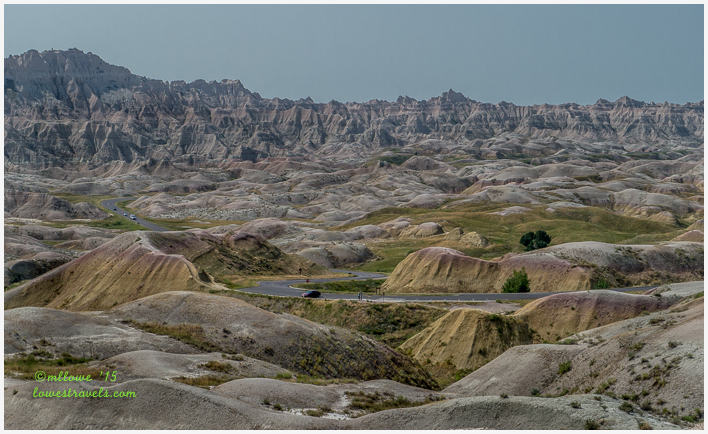
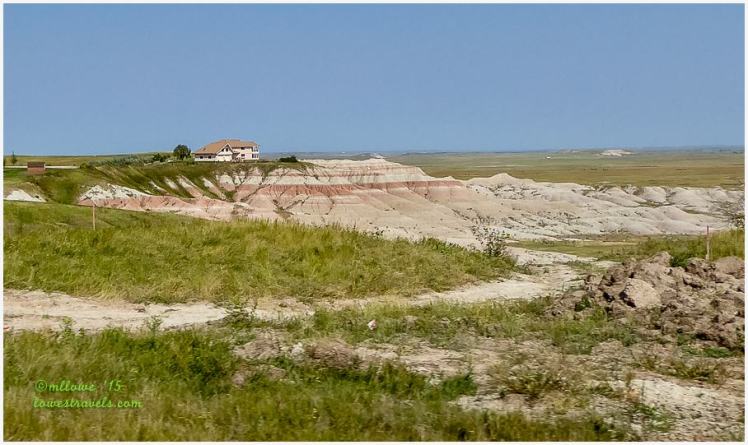
Fabulous! Oh, we’re so jealous. But your pictures and write up make us feel like we are right there with you. Thank you!
Fascinating land. We loved our stay but unfortunately didn’t get in much hiking due to the excessive heat. I know we’ll return!
Great post guys, I loved the pictures especially. We were there many many years ago and certainly didn’t see it as you did. I’m going to put it on my “list”!
Our visit thru the bablands was seen as a dry and barron land. The heavy amount of rain the past few yrs has possibly helped in showing the green grass and bright colors. We will add this trip to our list as well as the northern badlands.
Yes indeed, you’ve got your priorities straight!
Beautiful shots! We did not go to the Badlands so I am grateful you took me there! I sure love how green the plateaus are…I wonder if they are that way all the time or if it is a result of the excessive rain this year?
Always the best posts….one place guessing you could stare all day and continue to find some mystifying formation.
We were there several years ago, but on our Harley. Definitely need to get the boots dusted off and revisit! Wonderful post and pictures as always MonaLisa!
How nice that Steve got to finally go back and visit this area. We are with Gay and did this trip on a motorcycle which is a spectacular way to make the drive. One day we will have to do it again. Thanks for the background! Love the bright yellow and reds:)
Great idea to post the two badlands back to back. We stayed in the park in South Dakota just like we did in North Dakota and really loved camping both places and doing all the hikes. Your close of of the soil colors is beautiful. Really love the gorgeous landscape shots you got. It’s just how I remember it. Thanks for taking me back there. I too would really love to return.
We love the Badlands. We hiked the Notch Trail also. I can’t remember what other trails we did. So many breath taking places to see. Your photos are excellent.
Don’t worry about getting behind in your blogging. Just enjoy the good life.
I’m with you, ML — fun and fitness first — and I would also add friends — and then blogging as time permits! Your photos of the Badlands landscape are just gorgeous. Those colors are amazing!! Very interesting the difference in the way that the native peoples viewed the land — being aware of the abundance of life, instead of simply seeing desolation.
Since I am now woefully behind in blogging I have to agree with you, enjoying life and staying fit have to come before posting. We did love the SD Badlands, the unique formations and beautiful colors. I would love to return to this part of the country again some day.